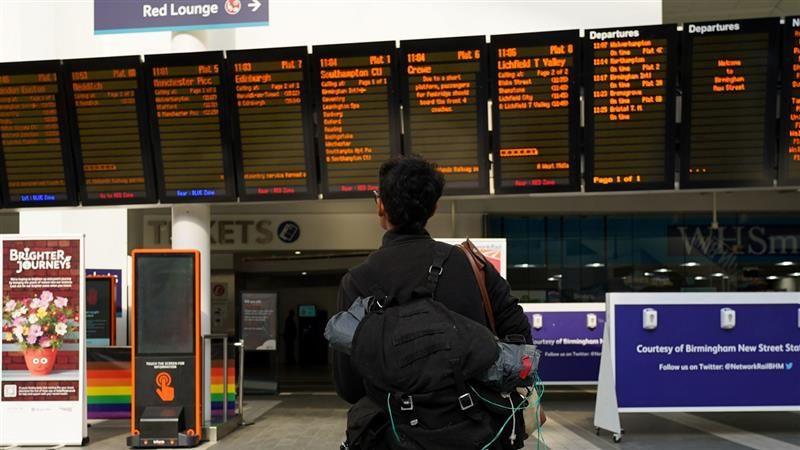End of an era as semaphore signals are taken down
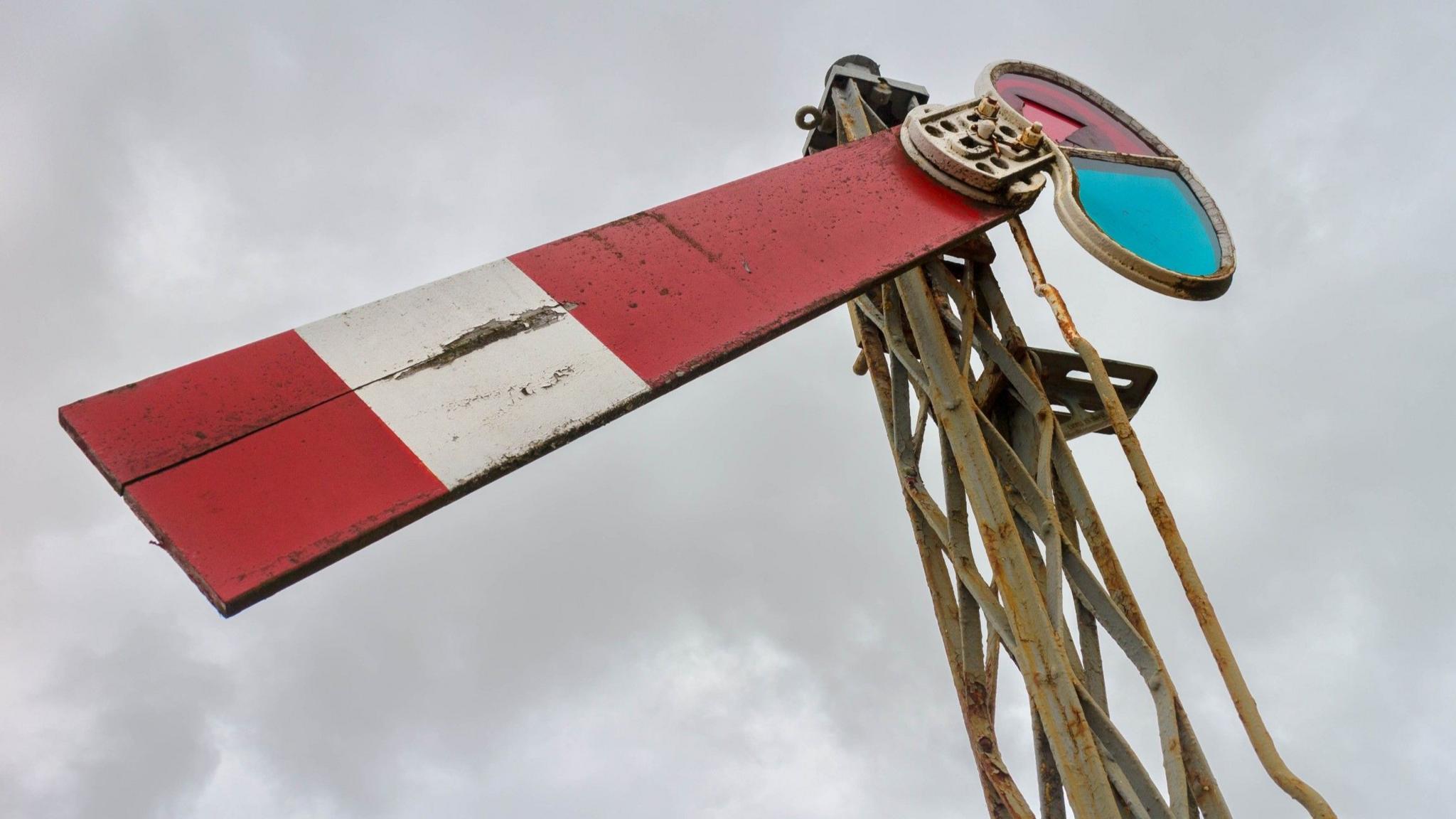
The semaphore signals at Manea were the last in use on the Ely to Peterborough line (stock image)
- Published
A railway historian says he believes the traditional semaphore signals removed from a rural railway station could have been the last in use in the entire Eastern region.
The wooden signals were dismantled from the trackside at Manea, in Cambridgeshire, on 1 November.
Network Rail confirmed they were the last semaphore signals on the Ely-Peterborough line, but the company was not completely sure if they were the last on the East Anglia system.
Peter Wright, a volunteer at the March and District Museum, said: "As far as everyday commuter services go, they could have now disappeared forever in our region."
Semaphore signals have been part of railway life since the 1800s and are currently being upgraded across the network - being replaced by a modern light system.
They were controlled by a system of levers within a signal box.
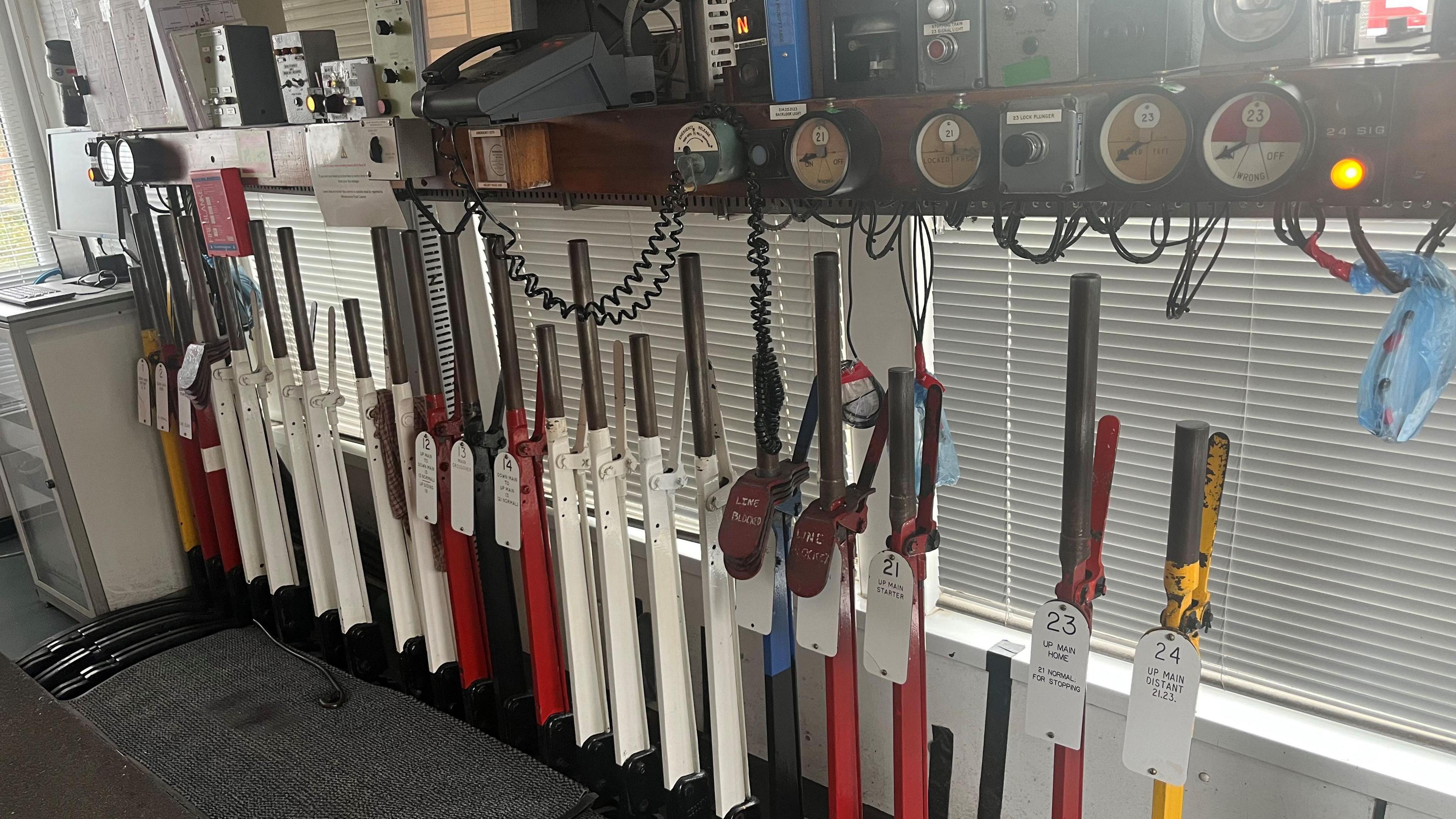
The Victorian railway signal box at Manea displays the various levers which controlled the movement of the semaphore signals
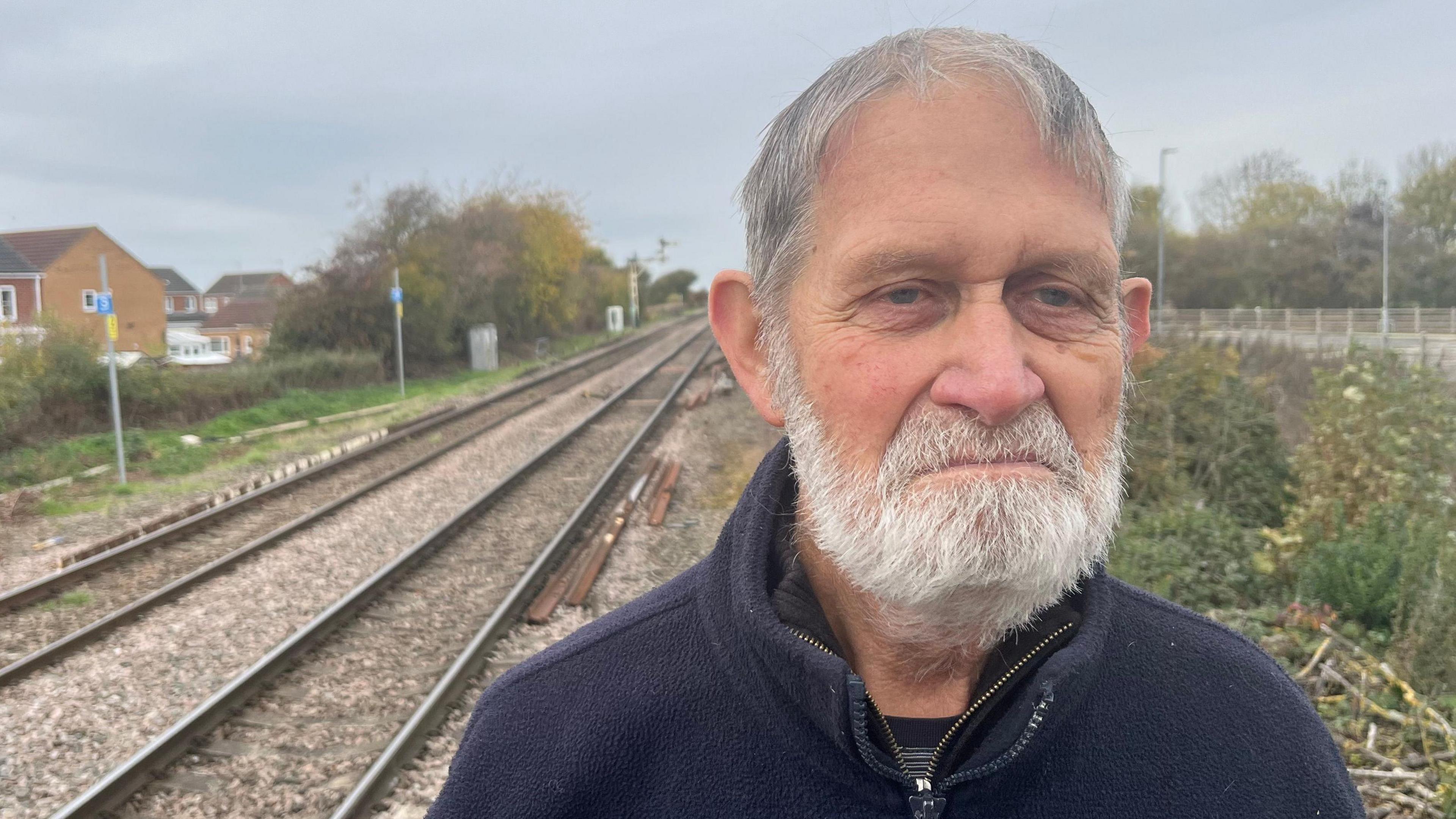
Peter Wright says he believes the railway semaphore signals removed from Manea on Saturday could have been the last in use in the Eastern region
Mr Wright, 78, the son of a Fenland railway man, said that Manea was, to his knowledge, the last bastion of Victorian mechanical signalling systems in East Anglia.
He said that signals and points were all controlled by wires and rods, levers and pulleys, with the whole system known as "mechanical signalling".
"The semaphore signals are being replaced with colour light signals (like traffic lights)," he added.
"Heritage railways do continue to use semaphore signals - so you can still see them at places like Nene Valley Railways in Peterborough, but as far as everyday commuter services go, they could have now disappeared forever in our region."
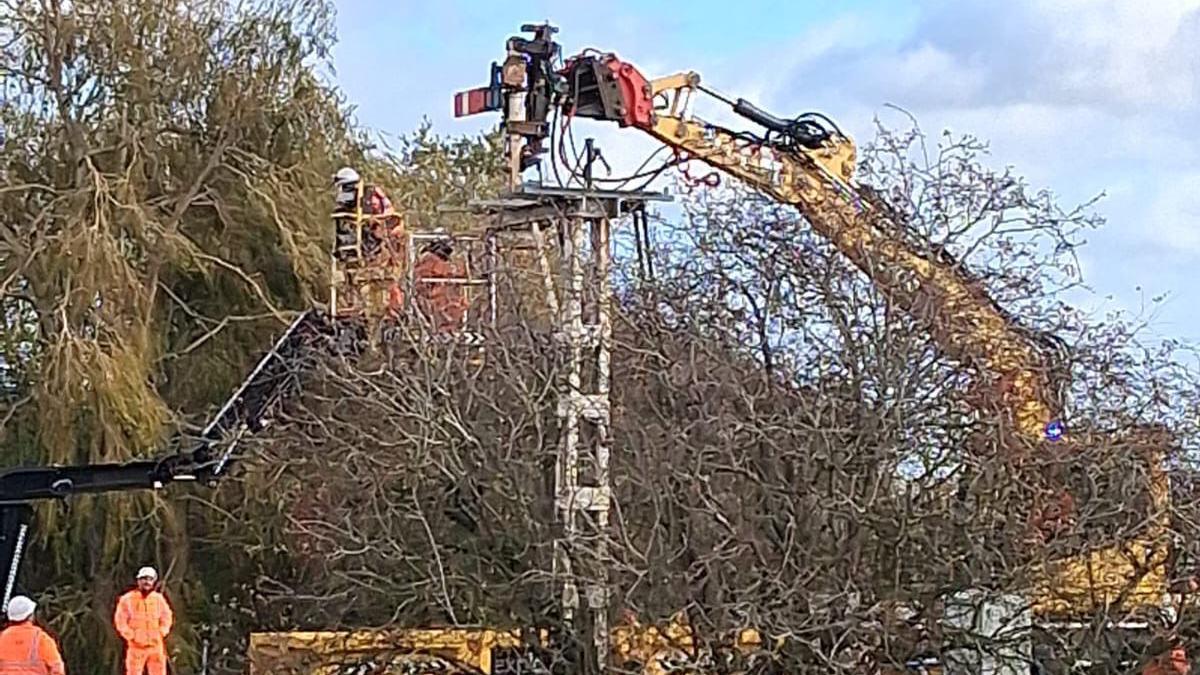
The last semaphore signal on the Ely-Peterborough line was taken down at Manea on 1 November
Richard Foster, the associate editor for Trackside railway magazine, said semaphore signals had quite a history.
"The signals themselves were called semaphores, dating back to the days of the flags," he said.
"If the signal arm is in the horizontal position, the line ahead is not clear; with the arm either pointing up or down, the line is clear."
Mr Foster said he thought the Peterborough-Ely section of railway was probably the last line in East Anglia to be converted, but he added that some isolated signals in yards and depots could still be in place.
Get in touch
Do you have a story suggestion for Cambridgeshire?
Follow Cambridgeshire news on BBC Sounds, Facebook, external, Instagram, external and X, external.
Related topics
Related stories
- Published23 August

- Published2 November

- Published16 May
